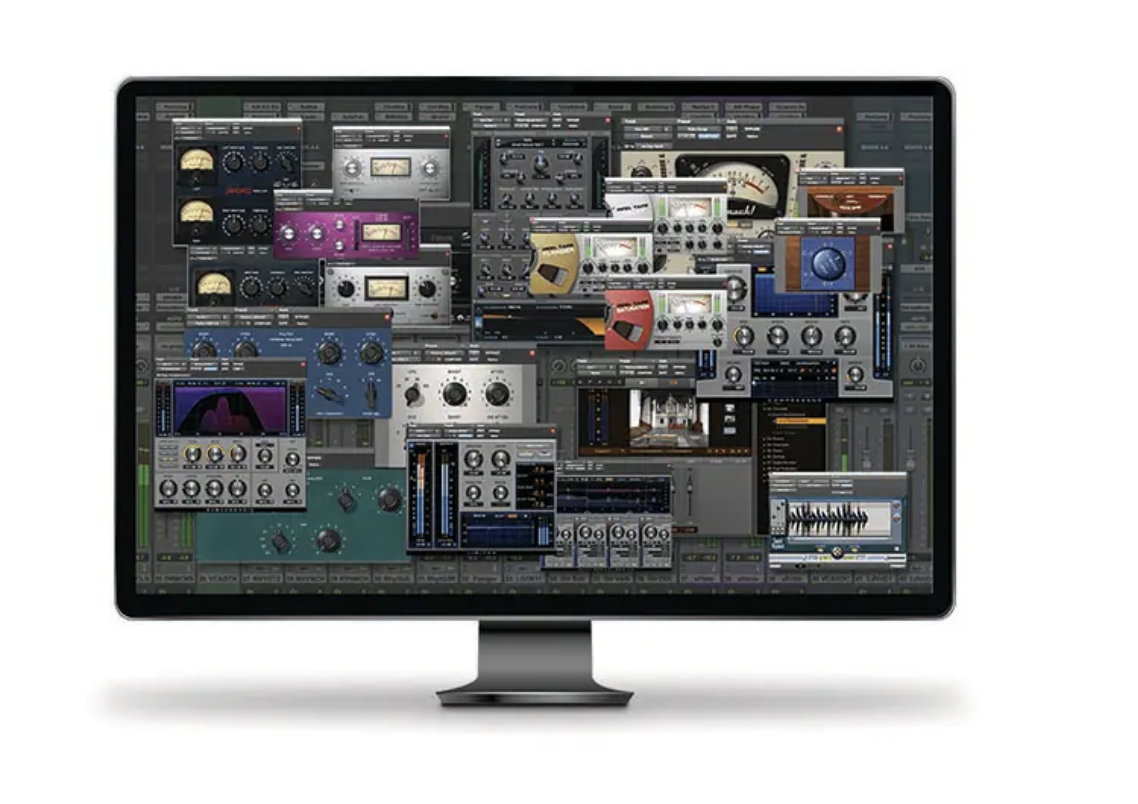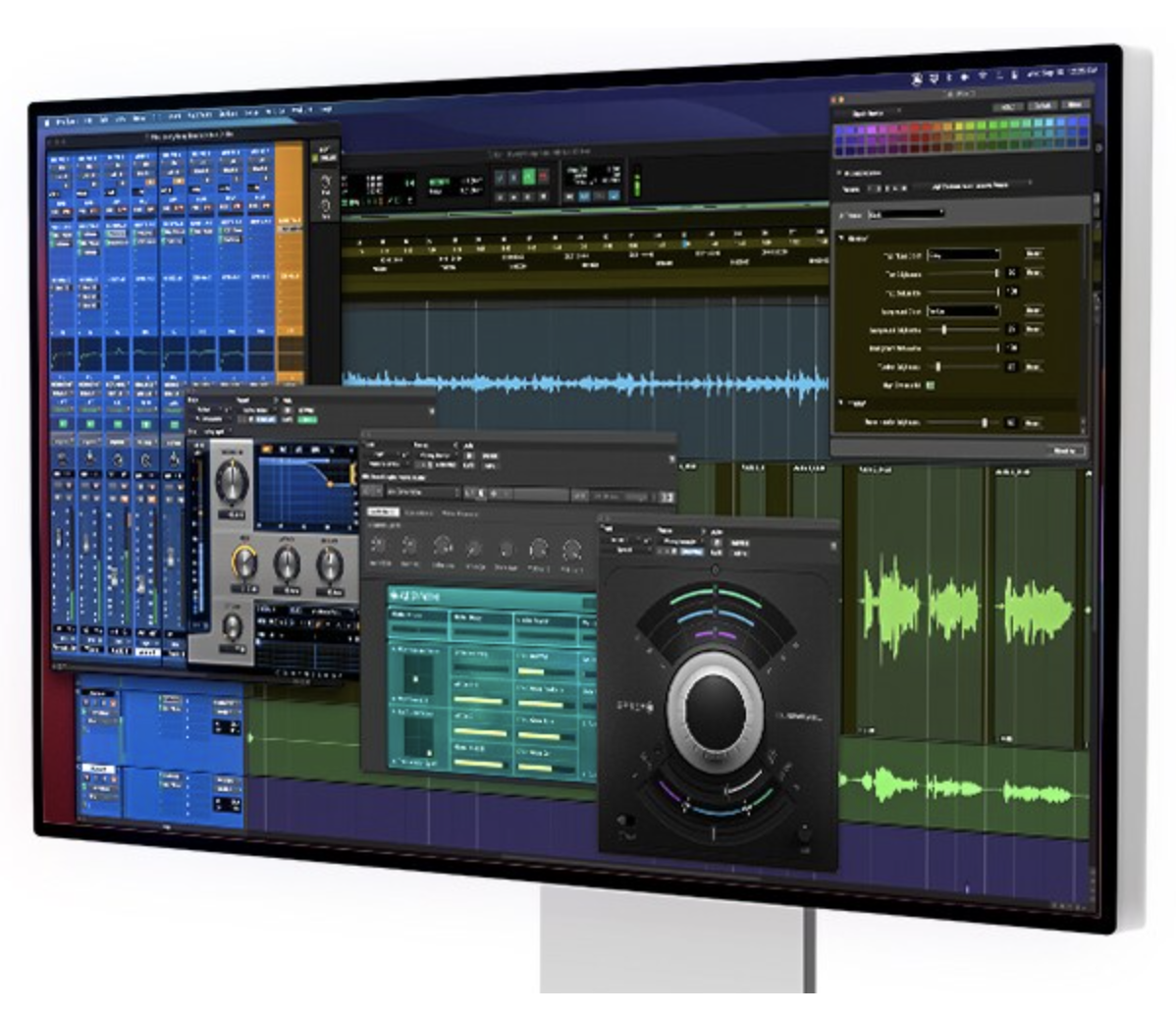Pro Tools vs. Logic Pro: Which Is Better for Your Workflow?
Mackenzie Scott

Mar 1, 2022
When it comes to finding the best editing software and tools, market research is your best friend. A quick Google search for the best DAW (digital audio workstation) can yield thousands of results — which is great, but also overwhelming to read through.
If you’re looking for a comprehensive breakdown of Pro Tools and Logic Pro — i.e., two of the biggest software programs out there today — you’ve come to the right place.
In this guide, we’ll compare how Pro Tools and Logic Pro stack up against each other in the following categories:
Before jumping right in, it’s important to note that finding the best DAW for your workflow is ultimately a subjective process. Factors like production type, experience level, and budget will affect each creator’s decision a little bit differently.
That being said, let’s set the record straight:
As far as DAWs go, Pro Tools and Logic Pro are both top tier programs. (They have the word “pro” in them, after all.) Pro Tools is the industry standard for audio editing, and Logic Pro is a cult favorite among music producers and engineers. So, from an objective standpoint, you really can’t go wrong either way.
When you take a closer look at the pros and cons, however, you might find that one or both of these DAWs aren’t actually compatible with your workflow needs. The cost might be too high, the interface might be too difficult to navigate, etc.
At the end of the day, you need a program that makes your life easier. And that means a program with built-in tools and features that gives you a more streamlined user-experience whether you’re producing podcasts, music, sound effects, or other audio-centric projects.
That program could definitely be Pro Tools or Logic Pro, but on the off chance it isn’t, here’s a guide with six other options to check out next. For now, let’s keep the spotlight exclusively on Pro Tools and Logic Pro.

Image source: Pro Tools
Pro Tools: $29.99/month - $79.99/month
Logic Pro: $199.99
A key difference between Pro Tools and Logic Pro is the pricing. With Pro Tools, you have the option of a free trial, but you’ll pay a monthly subscription cost afterward. With Logic Pro, the software is yours to use forever with a one-time fee of $199.99.
While it’s cheaper in the long run to opt for Logic Pro, you do get a lot of bang for your buck when you opt for either the Pro Tools or Pro Tools Ultimate plan. If you’re someone who needs more variety with multi-channel mixing, channels of I/O, and audio tracks, then you might be willing to invest upwards of $79.99 each month in a DAW you’ll use every day.
Cost is a key factor in the decision making process, but it’s not the only one. If the price is right but the system compatibility is non-existent, it’s a mute point.
Pro Tools: macOS & PC
Logic Pro: macOS only
Logic Pro wasn’t always exclusively available to Mac users. In 2002, Apple bought the company that created Logic Pro (originally called Notator Logic) and, from that point on, the software was no longer compatible with PC.
Pro Tools, on the other hand, is accessible to both macOS and PC users.
What this means for today’s creators is that, between Logic Pro and Pro Tools, the latter is the better option when it comes to system compatibility. If you’re relying on PC for audio production, this completely rules out Logic Pro as a viable option.
Aside from cost and system compatibility, another factor to consider is how user-friendly your potential DAW is based on your current experience level. While there’s always a learning curve when you’re using new software, the learning curve shouldn’t feel insurmountable.
That being said, here’s what you need to know about the user experience for Pro Tools and Logic Pro:
Odds are you won’t become an expert Pro Tools user overnight — and that’s true even if you have years of audio production experience. This DAW is designed to give you all the tools you need to make and deliver professional-grade projects, so there’s a lot to get familiar with.
For context, here’s an example of what your project could look like in Pro Tools:

When you’re just starting out with this DAW, the user-experience can be overwhelming. For that reason, this program probably isn’t the best go-to option for beginners or even seasoned professionals working against tight deadlines (i.e., with very little room for trial and error).
Fortunately, there are resources out there that can help you overcome steep learning curves with Pro Tools. Two of those resources are this shortcuts tutorial from YouTuber Wavy.wayne and this one from professional producer and engineer Amir Perry.
Like Pro Tools, Logic Pro is a DAW that has all of the most important features and tools a sound engineer could ask for. While this is obviously great news, it’s also the reason why this software isn’t necessarily the most beginner-friendly option on the market.
Even still, Logic Pro’s interface is easier to intuitively understand and navigate than Pro Tools’. Not to mention, Apple is continually rolling out updated versions of the program so that the software is always one-upping itself.
If you’re looking for a good introductory tutorial to using Logic Pro, check out the video below:
It’s one thing to say that Pro Tools and Logic Pro are top-notch DAWs, and it’s another to really break down why. Even though cost, system compatibility, and usability are important, the built-in features are ultimately what we use to determine whether the investment is worth it.
Both of these DAWs bring a lot of value to the table, so let’s take a closer look.
Depending on the package you opt for — i.e. Pro Tools vs. Pro Tools Ultimate — you’ll get access to different amenities and features. You can compare those benefits here, but in the meantime, here’s an overview of the main perks:
Since Logic Pro isn’t offered in a pricing tier system, you unlock all of the program’s features and tools when you pay that one time cost of $199.99. Here’s a peek at what’s included with this DAW:
In addition to these features, Logic Pro has a massive Sound Library as well as a wide variety of built-in plugins and third party plugins. (More on that next.)
Plugins can help you take your audio production process to the next level and have even more control over the sound quality in your projects. It’s a big deal, so here’s what you need to know about Pro Tools and Logic Pro plugins:
With both Pro Tools and Pro Tools Ultimate, you get access to 120+ built-in plugins across the following categories:
(You can find a detailed breakdown of all of the available plugins in each category here.)
With Logic Pro, you’re able to use a wide array of built-in plugins (like 70 effect plugins, 25 instrument plugins, etc.), but you also have more options when it comes to third party plugins. A few of those third party plugins include Smart Console, nanoKONTROL, and AlphaTrack.
Up to this point, we’ve touched on many key factors that should be top-of-mind when searching for the best DAW for your workflow. The last factor that can tip the scale in favor of one DAW over another is what we call the added bonuses.
For example, one of the main reasons why creators love Pro Tools is that they can collaborate remotely with fellow creators via Avid Cloud Collaboration. There’s also an app called “Pro Tools | Control” that lets you control your session from a mobile device.
Similarly, an added bonus that comes with Logic Pro is that you can use the Logic Remote to make adjustments to your session or record a virtual instrument from within your iPhone or iPad.
These extra amenities go a long way in setting Pro Tools and Logic Pro apart from other DAWs, so at the end of the day, you really can’t go wrong with either option.
If you’re looking for more tips on streamlining your post-production process, these articles from the Soundstripe blog are worth checking out: